Thin-leaved Sunflower
- September 26, 2023
- 0 comment

The Thin-leaved Sunflower, scientifically known as Helianthus decapetalus, is a charming wildflower that graces North American landscapes with its delicate beauty. This perennial plant is native to eastern and central North America, often found in meadows, prairies, and along roadsides. What sets this sunflower apart is its slender, lance-shaped leaves, which give it its common name. The Thin-leaved Sunflower produces cheerful yellow flowers with a striking dark center, reminiscent of the classic sunflower bloom. Its ability to thrive in a variety of soil types and its adaptability to different growing conditions make it a beloved choice for both wildflower enthusiasts and gardeners looking to attract pollinators.
Beyond its aesthetic appeal, the Thin-leaved Sunflower plays a vital ecological role in its native habitat. Its bright, daisy-like flowers provide a valuable food source for pollinators like bees and butterflies, making it an essential component of pollinator-friendly gardens and landscapes. This plant also boasts a deep root system, which helps prevent soil erosion and contributes to soil health. Furthermore, its presence in native ecosystems contributes to biodiversity and supports a variety of wildlife, as the seeds are a favored food source for birds such as finches and sparrows. The Thin-leaved Sunflower, with its graceful appearance and ecological benefits, exemplifies the interconnectedness of plant species within our ecosystems.

These sunflowers thrive in environments with ample sunlight, but they can also adapt to partial shade. Well-drained soil is essential, and it’s advisable to amend the soil with organic matter for optimal growth. Sow the seeds in the spring or early summer, providing adequate spacing to allow for their growth. During their establishment phase, keep the soil consistently moist. Once established, Thin-leaved Sunflowers are relatively low-maintenance, requiring little intervention. Their vibrant yellow blooms, which emerge in late summer and early fall, are not only visually appealing but also provide sustenance for a variety of pollinators, adding to the ecological diversity of your garden. Incorporating this sunflower into your outdoor space is not only aesthetically pleasing but also environmentally beneficial.
| Characteristics | Description |
| Scientific Name | Helianthus decapetalus |
| Common Names | Thin-leaved Sunflower, Thinleaf Sunflower, Forest Sunflower |
| Plant Type | Perennial herbaceous plant |
| Native Range | Eastern and Central North America (USA and Canada) |
| Size | 3 to 6 feet (0.9 to 1.8 meters) in height |
| Leaves | Slender, lance-shaped, 3 to 6 inches (7.5 to 15 centimeters) in length, arranged alternately on the stem |
| Flowers | Bright yellow with a dark central disk, approximately 10 ray florets per flower |
| Bloom Time | Late summer to early fall |
| Habitat | Meadows, prairies, open woodlands, roadsides |
| Soil Tolerance | Adaptable to various soil types |
| Moisture Requirements | Tolerant of different moisture conditions |
| Ecological Significance | Supports pollinators such as bees and butterflies by providing nectar and pollen; seeds are a food source for birds |
| Cultivation | Thrives in sunny to partially shaded areas with well-drained soil; low-maintenance once established |
| Taxonomy | Belongs to the Asteraceae family, which includes other well-known species like daisies and asters. |
Getting to Know the Botanical Beauty
The world of flora is filled with countless wonders, each with its unique charm and significance. Among these botanical marvels, the Thin-leaved Sunflower (Helianthus decapetalus) stands out as a testament to the elegance and resilience of nature. In this article, we’ll explore the enchanting world of the Thin-leaved Sunflower, from its scientific classification to its ecological importance, cultivation, and the many benefits it offers.

Woodland Elegance
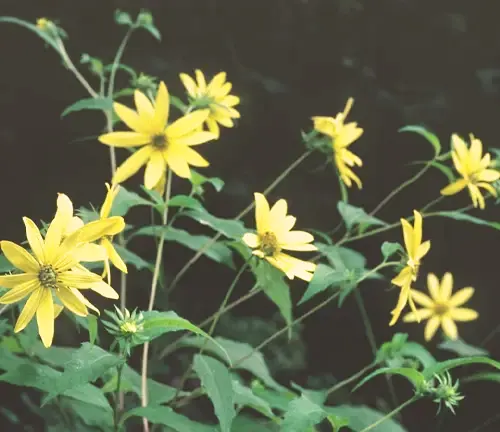
The Thin-leaved Sunflower, also known as the Thin-leaved Sunflower or the Forest Sunflower, is a species of wildflower native to North America. Its striking beauty lies in its slender, lance-shaped leaves and radiant yellow petals, which grace woodlands, meadows, and prairies with their presence. This perennial herbaceous plant belongs to the Asteraceae family and is known for its ability to thrive in various ecological niches.
Scientific Classification
To understand the Thin-leaved Sunflower better, let’s delve into its scientific classification:
- Kingdom: Plantae
- Phylum: Angiosperms
- Class: Eudicots
- Order: Asterales
- Family: Asteraceae
- Genus: Helianthus
- Species: Helianthus decapetalus
This scientific nomenclature provides insights into the plant’s botanical relationships and places it among the sunflowers, making it a close relative of the iconic sunflower (Helianthus annuus).
Ecological Importance
The Thin-leaved Sunflower plays a vital role in its native ecosystems. Its bright yellow blooms serve as a rich source of nectar and pollen, attracting a plethora of pollinators, including bees, butterflies, and birds. This pollination activity contributes to the diversity and health of the local flora, making it a keystone species in many natural communities.
Additionally, the plant’s foliage offers shelter and forage for wildlife, aiding in the survival of various insects and small mammals. Its deep roots help prevent soil erosion, stabilizing the fragile ecosystems it inhabits.
Cultivation and Conservation
While the Thin-leaved Sunflower primarily thrives in its native habitat, it’s also suitable for cultivation in gardens. Gardeners and conservationists alike appreciate its low maintenance requirements and adaptability to various soil types, making it a valuable addition to landscaping projects and native plant gardens.
However, it’s essential to maintain ethical and sustainable practices when cultivating Thin-leaved Sunflowers. Always source plants from reputable sources, and avoid harvesting specimens from the wild, as many regions have designated it as a protected species due to habitat loss.
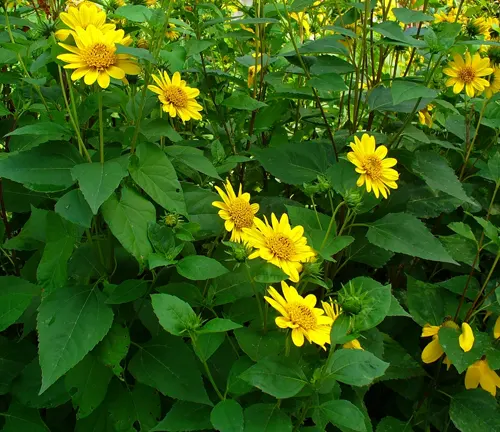
Fragrance
One notable characteristic of Thin-leaved Sunflowers is their pleasant fragrance. These sunflowers emit a sweet, honey-like scent that adds an extra layer of allure to their vibrant appearance. This fragrance not only enhances the sensory experience for humans but also attracts a range of pollinators, aiding in their crucial role in the ecosystem.
Soil Stabilization
The extensive root system of Thin-leaved Sunflowers makes them exceptional soil stabilizers. Their roots penetrate deeply into the earth, binding soil particles together and preventing erosion. This quality is particularly valuable in regions prone to soil degradation, such as steep slopes and riverbanks. By preventing soil erosion, Thin-leaved Sunflowers contribute to maintaining water quality and preserving the integrity of landscapes.
Benefits
The Thin-leaved Sunflower offers a multitude of benefits, both ecologically and aesthetically. Its vibrant blossoms beautify natural landscapes and gardens, attracting pollinators and enriching biodiversity. Moreover, its adaptability and soil-stabilizing properties make it a valuable asset in conservation efforts and erosion control. Finally, the sweet fragrance it emits adds a delightful olfactory dimension to outdoor spaces, enhancing the overall experience of nature enthusiasts and gardeners alike.
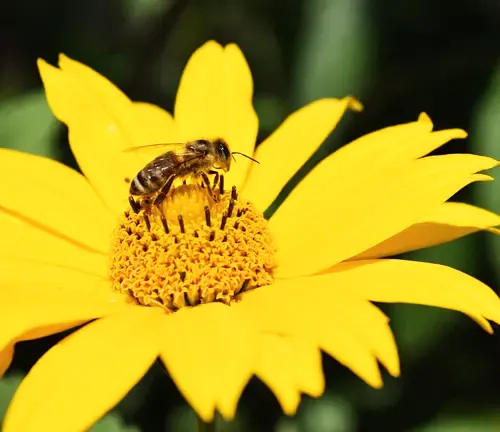
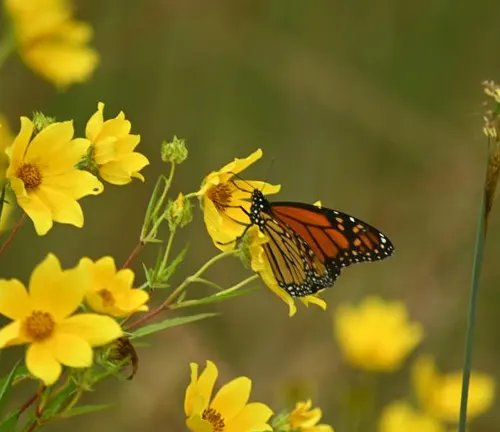
Conclusion
The Thin-leaved Sunflower is a botanical treasure deserving of recognition and protection. Its beauty, fragrance, and ecological significance make it a symbol of the marvels that can be found in our natural world. By appreciating and conserving species like the Thin-leaved Sunflower, we can contribute to the preservation of our planet’s biodiversity and the enhancement of our own lives through a deeper connection with nature.
Frequently Asked Questions (FAQs)
- Do Thin-leaved Sunflowers have any cultural or historical significance?
Thin-leaved Sunflowers, like many other native plants, often hold cultural significance for indigenous communities. They may have traditional uses in medicine, ceremonies, or folklore. Learning about these cultural connections can deepen our appreciation for this wildflower’s importance. - Are there any rare or unique varieties or subspecies of Thin-leaved Sunflowers?
Within the Thin-leaved Sunflower species, there may be variations or subspecies adapted to specific regions or environmental conditions. Exploring the diversity within this species can be fascinating and may reveal unique adaptations. - How can gardeners and conservationists help promote Thin-leaved Sunflower populations in their local areas?
Many people want to contribute to conservation efforts. Providing specific guidance on how individuals and organizations can support the growth and preservation of Thin-leaved Sunflowers in their regions can be valuable information. - What are the most common pests and diseases that affect Thin-leaved Sunflowers, and how can they be managed naturally?
Understanding the challenges that Thin-leaved Sunflowers face in terms of pests and diseases and offering eco-friendly solutions for managing these issues can help gardeners and conservationists maintain healthy populations. - Are there any ongoing research projects or citizen science initiatives related to Thin-leaved Sunflowers that people can get involved in?
Citizen science plays a crucial role in understanding and conserving native plant species. Sharing information about current research or opportunities for the public to participate in Thin-leaved Sunflower-related projects can engage enthusiasts in a meaningful way.


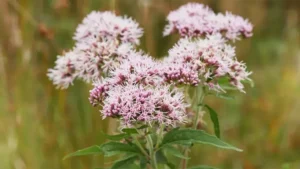
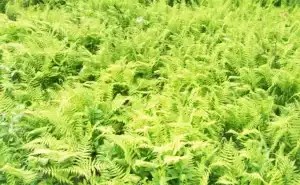


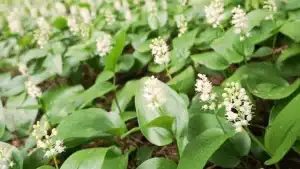

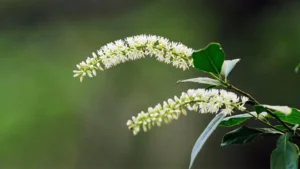
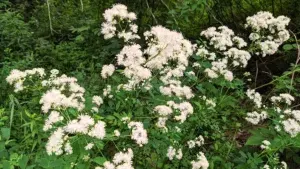

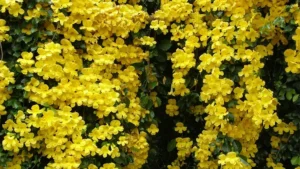
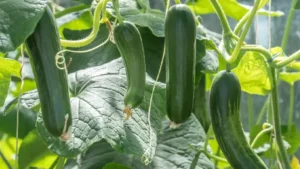

Leave your comment